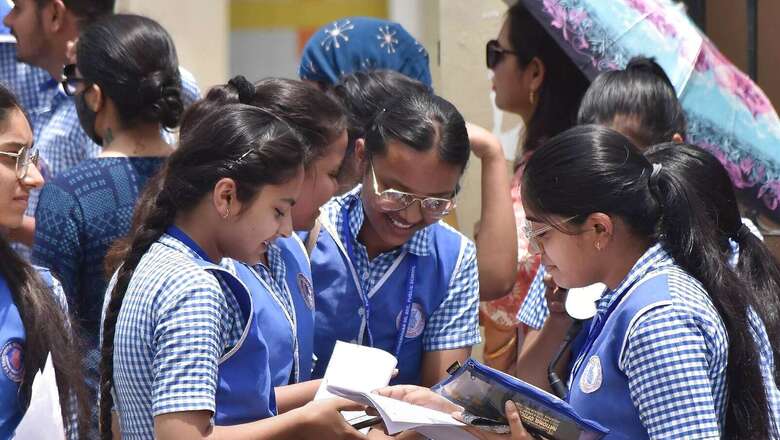
views
The Indian education system is one of the largest in the world. In 14.8 lakh schools, a community of 95+ lakh teachers empower 26.52 crore students every day. In fact, 2021-22 saw around 25.57 crore students continue to high secondary education – higher by 19 lakh students when compared to 2020-21 (25.38 crores enrolled for higher education) – a remarkable improvement in the nation. However, for crores of children, basic education is still a distant dream. But who are these children and what are the barriers preventing them from getting quality education?
Communities who do not have access to schools
While India has made progress in reducing gender and social-related stigmas in schools, the latest National Education Policy (NEP) 2020 states that even today, a decline in school enrollment is pronounced among Socio-Economically Disadvantaged Groups (SEDGs), and even steeper in higher education. What’s worse is that girls cut across all vulnerable groups, making up about half of the SEDGs.
To further set the context, as recently as three years ago, 75 percent of five-year-old Children with Disabilities (CWD) in India did not go to school. In 2021-22, almost 8 percent of girls aged 15-16 years were not enrolled in schools. And the Gross Enrolment Ratio (GER) among children from the Scheduled Castes (SC) decreased from 113.1 percent in primary education to 61.49 percent in higher secondary education; and among children from Scheduled Tribes (ST), the ratio decreased even more (from 106.5 percent to 52.02 percent). Joining them are millions more who face barriers of location, wealth, language, sexual orientation, and migration. As the country has adopted ‘Sabka Saath Sabka Vikas’ as a goal to envision an inclusive future, it’s critical to address these challenges to make education a right, rather than a luxury.
Roadblocks in India’s education system
The NEP 2020 aims to increase access to quality education for all by 2040. But current barriers to inclusive education that either exclude children from schools or push them out of school midway are as follows:
- Girl children – The lack of sanitation and toilets is one of the primary reasons for girls dropping out. While 14.3 lakh schools have a girls’ toilet, only 13.9 lakh of them have functional toilets. This also means that 50,000 schools do not have a girls’ toilet at all.
- Children With Special Needs (CWSN) students – As of last year, less than half (49.72 percent) of the schools in the country had ramps with handrail facilities for CWSN students. And more than 10 lakh schools do not have CWSN-friendly toilets.
- Transgender students – These children are subjected to bullying, sexual abuse, and overall mental trauma due to the lack of acceptance from teachers and peers alike.
- Minority population, particularly tribal communities: ST children find school curricula irrelevant and foreign to their lives, both culturally and academically.Recognising these concerns, the NEP 2020 has proposed strategies to improve access to education. For instance, wherever there is a large population of SEDGs who do not receive education, the policy recommends these regions be declared as Special Education Zones (SEZs) where policies are to be implemented with special efforts. It has also proposed a ‘Gender-Inclusive Fund’ to provide equitable education for girls and transgender students. For children who come to school from far locations, the policy states that free boarding facilities will be built, with suitable arrangements for the safety of all children. Bridge cusses, financial assistance and scholarships for SC and ST students are all part of the NEP 2020. However, a framework for inclusive education is only the first step.
How can India implement inclusive education at the grassroots?
While the country has a policy with relevant recommendations, partnerships with development sector organisations can accelerate the goal of inclusive education. For instance, organisations like Rotary aim to decrease gender disparity and help communities get basic education; provides early learning intervention and integrated therapy for CWSN students; and mentor transgender individuals to become financially independent. Last year, the organisation signed a Memorandum of Understanding (MoU) with the Edutech platform First in Class to create the largest free-of-cost Edutech initiative in India and in the world. Organisations such as these – who have a credible, far-reaching impact, and are already powered by a wide network of like-minded people – can mobilise quick change that is required to remove barriers to education.
Another key element that can guarantee basic schooling for all in the country is technology. Along with using it to advance education in urban, private schools, it is important to leverage it as a democratising tool to bolster online programs for underserved children and create a digital infrastructure that would be interoperable and evolvable. Basic solutions such as creating a useful digital repository will go a long way. From assistive technologies like screen readers and speech-to-text software to help CWSN students to e-classrooms for students in remote locations, technology can help tackle every SEDGs’ challenges to education.
Inclusive education equally lies in the hands of teachers, children, and parents. To achieve the Sustainable Development Goal (SDG) 4 – ‘Ensure inclusive and equitable quality education,’ it is important to unlearn biases towards communities and cultivate a mindset that regards education as a basic right of a human being.
The author is the Trustee, The Rotary Foundation (2022-26). Views expressed are personal.
Read all the Latest Opinions here




















Comments
0 comment